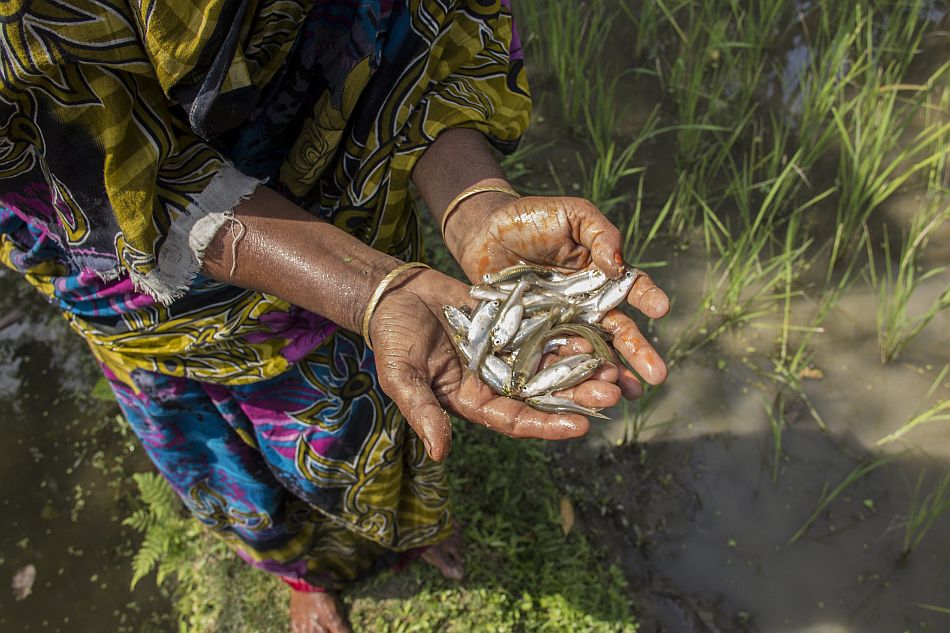By Deepa Joshi, Gender, Youth and Inclusion Lead, WLE and Sanjiv de Silva, Senior Regional Researcher – Natural Resources Governance, IWMI

The Ramsar Convention, an international, intergovernmental convention promoting the wise protection and sustainable use of wetlands, was founded in 1971. However, it wasn’t until 2018 that a resolution on gender was added to the convention. The new addition recognizes the “importance of coherence between gender-responsive climate and biodiversity policies and the balanced participation of women and men in the implementation of the Convention.”
Although vital, the Resolution has come late in the day. Structural inequality remains a key feature of wetland infrastructure, and this needs to change.
Today 171 countries are signatories to the Convention and committed to conserving the unique ecological character of wetlands while also taking into account the other social and economic values these landscapes hold for different stakeholders.
Wetlands are diverse ecosystems and provide critical food supplies, and fresh water, fibre and fuel and help regulate essential ecological water flows. In the face of climate risks and challenges, wetlands are more important than ever before, as they help reduce pollution of fresh water resources and mitigate risks of floods and droughts. In sum, the wise use of wetlands contributes to over 75 Sustainable Development Goal (SDG) indicators.
Diverse groups of local communities, including some of the most marginalised local communities live within or close to wetlands. These populations rely on wetlands resources for meeting their livelihood needs and can act as stewards in maintaining the ecological integrity of these landscapes.
The wise use of wetlands and gender: too little, too late?
About 40 million people globally rely on wetlands for their food, livelihoods and other ‘services’ including climate regulation and mitigation. However, it has been well known for quite some time now, that gender-power inequalities shape access to use and management of natural resources. We also know well that gender inequality is not simplistically binary. Various other social disparities, including class, ethnicity, religion, caste, age and disability intersect with gender to determine vulnerabilities and exclusions.
Thus, we need to ask, to what extent do Ramsar Convention guidelines and resolutions, including the Gender Resolution take into account the complexities of inequalities? Which women can and will be represented in wetlands management and governance? Will engaging supposedly homogeneous groups of women tackle deep-rooted inequalities amongst wetlands users and stakeholders?
A failure to identify and account for these ground realities will not help in addressing the SDG goal of ensuring that ‘no one is left behind’ and ensuring that the ‘furthest behind are first’ in the planning, design and management of the wise use of wetlands.
Rethinking gender and inclusion in the Gulf of Mottama wetlands
The above are questions and concerns that we are trying to unpack and tackle in ongoing research, which informs the Gulf of Mottama Project (GoMP) managed by HELVETAS and IUCN. The GoMP is a large coastal wetland in Myanmar, recently recognised by the Ramsar Convention as a Wetland of International Importance (a Ramsar Site). IWMI and WorldFish Researchers along with a local partner Point B are supporting the GoMP to address the complexities of inequality in wetlands management taking into account differences by poverty, ethnicity, religion and gender norms. Early insights from our research show that disparities in social identities go hand-in-hand with who is; or can be – at the table in making wetlands management and governance decisions at scale.
Organized in a social hierarchy, those with generations of local use-based knowledge do not necessarily have voice and legitimacy in decision making. On the one hand, gender norms shape perceptions of who has knowledge on what makes for the wise use of wetlands. We have often heard the same old legitimacy of masculinity, which affords positions of power and decision-making to men “men(s’) opinions are more important and valuable in the meeting because they are the household leaders”. OR “(w)e think women don’t have knowledge about the wetland and they tend to focus on personal feelings. Women are less experienced and need training in the future to develop knowledge. According to our culture, women tend to follow what is said.”
But gender is not the only axis of inequality. Age, ethnicity, religion, class all shape who become beneficiaries of new project interventions. In Myanmar, the historic conversion of wetlands to paddy fields has resulted in the displacement and disenfranchised millions of the most marginalized smallholders.
Ways forward
A key lesson we learn is that there is no easy way forward, no simple, quick-fix solution to ensuring the ‘wise use’ of wetlands.
One thing is clear, that a simplistic focus on gender, equating gender as women, and assuming that homogenous groups of women are equally excluded and vulnerable – is deeply problematic. Such a binary vision will certainly not help achieve the goal of social inclusion, of leaving ‘no one behind’; of putting the ‘furthest behind first’.
It’s useful to think about gender equality and inclusion in terms of the powerful and the marginalized, because both genders fall into both categories in a more practical way, because of the other identities they represent in their community. It is this ‘intersectionality’ that ultimately defines an individuals’ and groups’ social position.
Unless and until, we go beyond engaging local communities in managing externally, pre-determined ideas of the wise use of wetlands; and tackle the interconnected complexities of unequal social relations, gender-power imbalances and ecosystem politics – there will be no meaningful, transformative change.
At the start of the UN Decade of Ecosystem Restoration – it is imperative that we realize the need for a profound and urgent rethinking on who decides, how and why, what makes for the wise use of wetlands.

